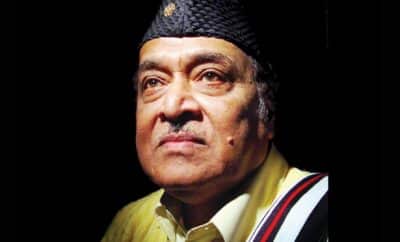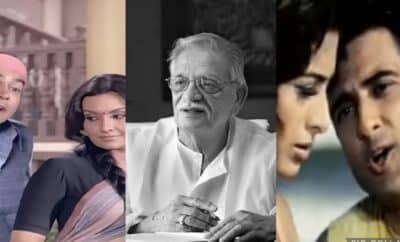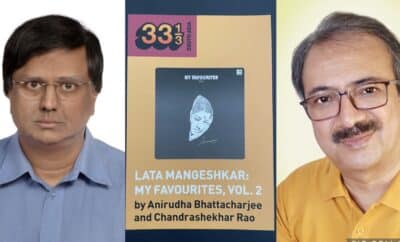Collections
Inhi Logon Ne Le Leena Dupatta Mera – Trailing The History With Various Versions
Pakeezah (1972) is a story of 2 women – Nargis and Sahibjaan (both played by Meena Kumari) caught between their dreams, ambitions, ethics and the rules of the society which is double faced. It is the journey of Sahibjaan becoming Pakeezah and the struggles, obstacles she faces in its path. A story of a courtesan illustrated beautifully through dances and songs to go with it. Each song is the depiction of an emotion expressed by her. Whether it is the eternal wait for the train guy, challenging the society, yearning for her lover or her readiness to disappear behind the horizon with him. The songs are not mere songs or mujras, they are the portraits of emotions of a woman into intricate musical framework. Yes music at times in history was also depicted through paintings. Did you know Ragas on the whole were represented as a painting of a woman? Ragas which have various emotions, expressions and Meena Kumari epitomized all this in and as Pakeezah. She mesmerises with her stillness. A simple stare from her into the camera and the audience know what she’s trying to say. She’s one of the very few celluloid figures who needed no dialogues to express. Her eyes did that effortlessly. Her expressions, when she hears the train passing, can be given as the best example. Or her expressions when she sings –
Inhi logon ne
Inhi logon ne
Inhi logon ne le leena dupatta mera….
Her eyes say – you want to know my truth? Come I’ll tell you the story myself. And that’s exactly what the song is about. She’s narrating what society has given her. It is the society which has brought her out as a courtesan. It is not the dupatta she’s speaking about but her soul and body.
Hamri na maano
Bajajva se poochho
Jisne asharfi gaz deena dupatta mera…
Ask the cloth merchant she says (traders of the society) who sold me to the society just to fill up his bag.
Hamri na mano
Rangrajva se poochho
Jisne gulabi rang deene dupatta mera….
Ask the cloth dyer (people who mislead her showing colourful dreams) who coloured my dupatta pink to fulfill his malicious dreams (and ruined hers).
Hamri na maano
Sipahiya se poochho
Jisne bajariya mein chheena dupatta mera….
Ask the protectors of law who broke the law. He’s the one who has powers and misused it.
This situation is relevant today also. It has been there since centuries. And this song/thumri/mujra has been there from many years before it got noticed through Pakeezah. A quick look at the various versions (lyrically and musically both). Legends say that the original lyrics of this thumri were written by Amir Khusro. Taking into account its resemblance to Chhap tilak sab chheeni…..(both based on Raag Yaman) it might be quite possible. Try singing Chhap tilak and Inhi logon ne by alternating lines of the songs, it comes under same meter. Khusro is also credited with having devised Raag Yaman, though one cannot claim his authorship on it. Coming back to the thumri, the lyrics have been credited to several lyricists. I’ve written about 2 such songs here and here. Let us trail various versions of this beautiful song.
The oldest version known has been found from 1921. Rendered by a courtesan Akhtari Jaan from Lucknow.
This song from Achhut Kanya (1936) rendered by Sunita Devi and Mumtaz Ali is very similar to the basic structure of Inhi logon ne….though the lyrics by J.S. Kashyap are completely different.
Himmat (1941) – A little known version now. Rendered by Shamshad Begum, music is credited to Pandit Gobindram and lyrics by Aziz Kashmiri.
Aabroo (1943) – A parody of the Shamshad Begum version from Himmat. Rendered by Yakub.
https://www.youtube.com/watch?v=Sn1C5qYLZrU
Sartaj (1950) – A duet by Shamshad Begum and Lata Mangeshkar is said to be picturized on Shyama and Munnawar Sultana, lyrics by Majrooh Sultanpuri and music Husnlal Bhagatram.
https://www.youtube.com/watch?v=x122xMkLwN4
The shooting of Pakeezah began in 1956 and Meena Kumari surely looks gorgeous in the black and white version as well (in this short clip).
Beti (1969) – We also have a nautanki version of the tune. Lyrics by Shakeel Badayuni, music Sonik Omi and sung by Asha Bhonsle and Usha Mangeshkar.
https://www.youtube.com/watch?v=z8Bgxt0E2l0
Last but not the least. The epitomized version from Pakeezah (1972).
There are still few of its versions remaining, including Dil na kisi ka jaaye re jaan from Kshatriya (1993). Did you know all these versions? Let us know by commenting here!!




Basavi Mukerji
February 27, 2019 at 11:19 pm
Loved the detailed report on this once popular semi classical song.
Deepa
February 28, 2019 at 3:03 pm
Thank you so much ?
KEDAR DEVARE
September 17, 2019 at 5:12 pm
Bohot badhiya Deepa Ji,itne sare versions pata nahithe,thanks a lot.